Mike Tyson's childhood was spent in a rough part of Brooklyn, where he was harassed by neighborhood bullies and eventually sent to reform school — where he learned how to box.
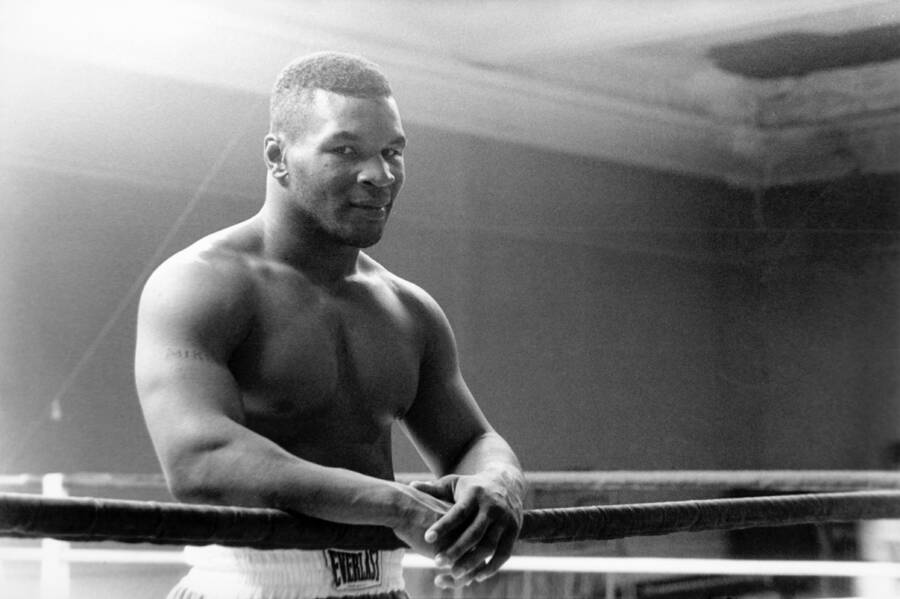
MediaPunch Inc/Alamy Stock PhotoMike Tyson in the early 1980s.
Today, he is known as one of the most fearsome boxers in modern history. As a kid, however, Mike Tyson was pudgy and shy, bullied, and living in poverty. Introduced to drugs at just 11 years old, he was arrested more than 30 times before he was even a teenager — and seemed destined for a life of crime. But Mike Tyson’s childhood would ultimately make him into one of the world’s most renowned athletes instead.
After being sent to reform school at the age of 13, Tyson was introduced to counselor Bobby Stewart, a former light-heavyweight champion. Tyson wanted to learn more about fighting, so Stewart proposed a deal. He would teach Tyson how to box, if Tyson would stay out of trouble and focus in school. Tyson agreed, and Stewart eventually introduced him to legendary boxing manager Cus D’Amato.
The rest is history.
Though Mike Tyson’s childhood left him with deep emotional scars and physical trauma, it also shaped him into the champion he would later become. His is an inspiring and tragic story, an optimistic tale about overcoming adversity — and a cautionary one about the long-term effects of abuse and trauma.
This is how a shy kid from a poor neighborhood became “the Baddest Man on the Planet.”
How Mike Tyson’s Parents Impacted His Early Years
Mike Tyson was born on June 30, 1966, in Brooklyn, New York, and grew up with two older siblings. Their biological father was not involved in their lives, having left the family behind when Tyson was just two years old. He was listed on Tyson’s birth certificate as Percell Tyson, according to a BBC Sports report from 2013, though Tyson’s primary father figure was another man named Jimmy Kirkpatrick.
Tyson also had a complicated view of his mother, Lorna Smith Tyson. Speaking with The Guardian in 2009, Tyson reflected that his mother was a “promiscuous” woman who “might have been a prostitute.”
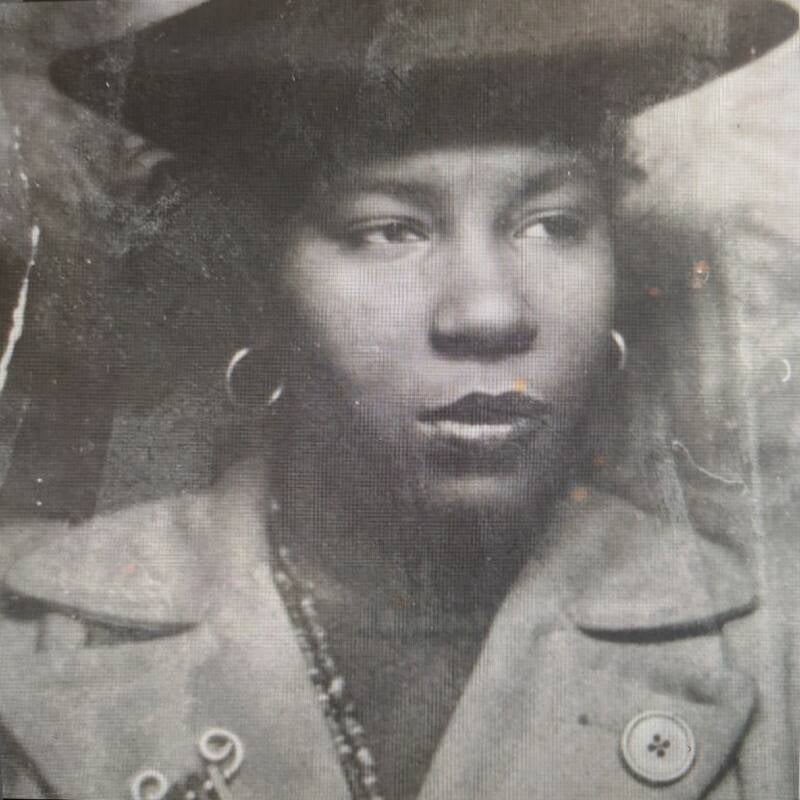
Find a GraveLorna Smith Tyson.
She also died when Tyson was just 16 years old — and never saw him succeed.
“I never saw my mother happy with me and proud of me for doing something,” Tyson remarked, per Bleacher Report. “She only knew me as being a wild kid running the streets, coming home with new clothes that she knew I didn’t pay for. I never got a chance to talk to her or know about her. Professionally, it has no effect, but it’s crushing emotionally and personally.”
Mike Tyson’s childhood hadn’t been any easier when she was alive, though.
How The Tumult Of Mike Tyson’s Childhood Led To The Tryon School For Boys
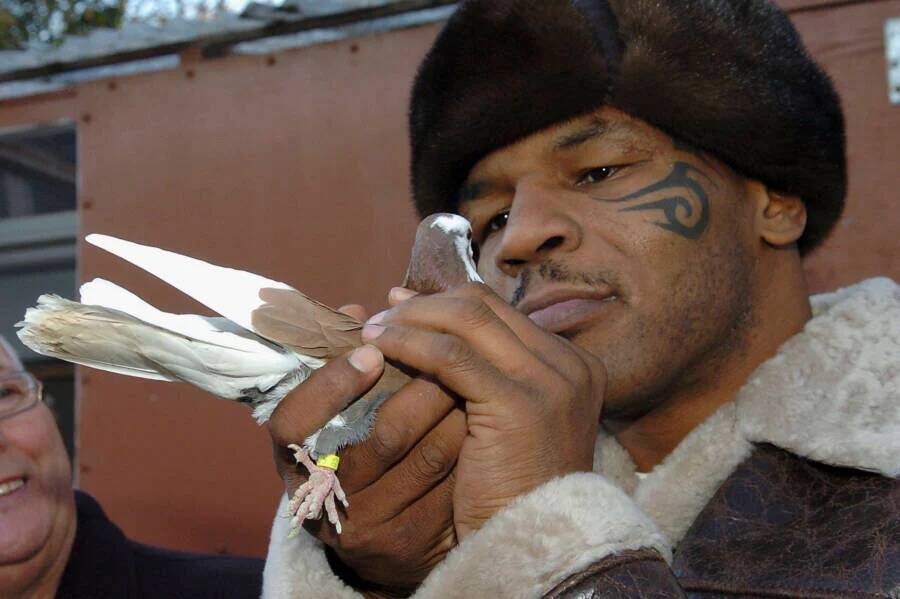
Stringer/Getty ImagesAs a kid, Mike Tyson helped keep pigeons along with some other kids in his neighborhood.
Mike Tyson’s childhood was marked by bullying, fear, and troubles with the police.
“I wouldn’t go to school because people would pick on me,” the boxer later reflected. “I was really fat and had a lisp. I so desperately wanted to be like the so-called tough guys.”
Back then, he didn’t fight back. He ran away. He found some solace as a kid taking care of racing pigeons, and even helped build a new pigeon coop. This just led to more bullying, though, as he was mocked for having clothes covered in tar and pigeon droppings. Then, one day, one of his bullies grabbed one of his pigeons and popped its neck right in front of him.
That was the first time Mike Tyson threw a punch.
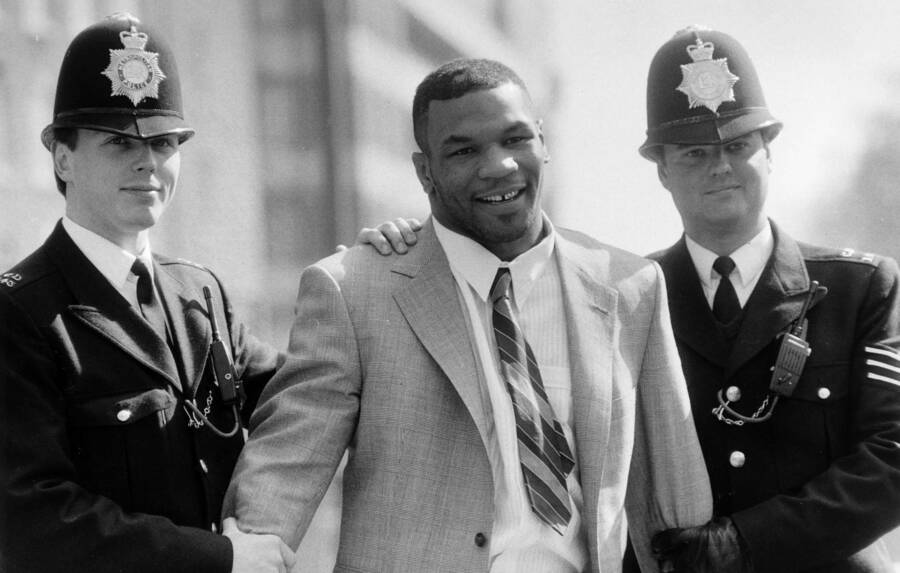
Trinity Mirror/Mirrorpix/Alamy Stock PhotoMike Tyson posing for a photo with police in 1987.
Shortly afterward, one of the older kids asked him to meet up at the pigeon coop, but not to take care of the birds. Instead, Tyson said, “he taught me how to rob houses and we spent the whole day robbing. He took me shopping, bought me a whole bunch of new clothes, and told me to go to the school dance the next weekend. It was totally different.”
Tyson learned then that “how you represented yourself” could have a serious impact on how others treated you. He started stealing more often, which also meant he needed to learn how to defend himself. Before long, Tyson learned how to fight on the streets, though this didn’t guarantee his safety.
By the time he was 13, Tyson had been arrested 38 times. After police caught him with $1,500 in stolen cash stuffed in his pockets, he was sent off to the Tryon School for Boys — and suddenly, Mike Tyson’s childhood changed.
Inside Mike Tyson’s Childhood Love Of Boxing
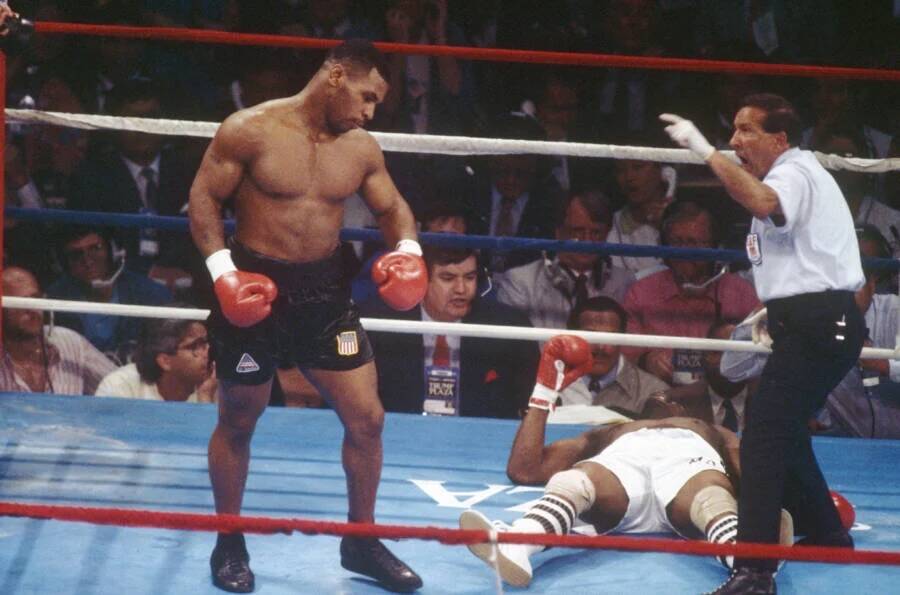
Wally McNamee/Corbis via Getty ImagesMike Tyson boxing early in his career.
After heading off to the Tryon School for Boys in upstate New York in 1979, Mike Tyson was introduced to counselor Bobby Stewart, who just so happened to be an amateur boxing champion. Tyson did a few lessons with Stewart, and Stewart instantly recognized potential in the troubled teenager. After making Tyson promise to stay out of trouble, Stewart began to train him. And in 1980, Stewart put him in contact with boxing coach Cus D’Amato.
D’Amato did much more than just coach Tyson, though — he made him part of the family. For the first time, Tyson had a stable home, enough food on the table, and someone rooting for his success.
“Cus had an extraordinary impact on my life,” Tyson said. “He adopted me, pretty much became my legal guardian, like my father figure. I never knew what it was like for most people that had fathers.”
They trained together, watched boxing matches, and workshopped techniques. Soon, that hard work paid off. Tyson went to the Junior Olympics in 1981 and 1982, broke several records including the fastest knockout, and determined then to become an unforgettable champion.
“I didn’t need to take the handouts. It was just psychological motivation, refusing to accept what you had always accepted, refusing to accept welfare, refusing to accept being bullied any more, refusing to live your life unlawfully,” he said. “…I said, I’m going to die to get this. I’m going to dedicate my life to it.”
Even with this newfound determination and conviction, though, the trauma of Mike Tyson’s early life continued to follow him as his fame grew.
Personal Issues, Rape Conviction, And A Complicated Legacy
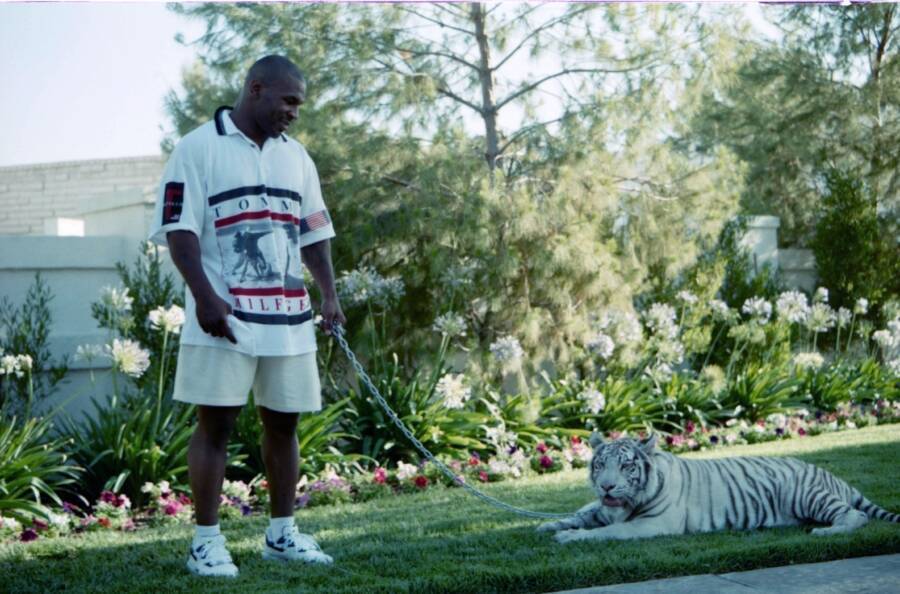
The Ring Magazine via Getty ImagesMike Tyson with one of his pet tigers.
The early 1980s saw Mike Tyson go from a troubled Brooklyn kid to a force to be reckoned with, but personal problems continued to weigh him down. First was his mother’s death from cancer in 1982, the same year he went to the Junior Olympics. Then, around the same time, he was expelled from Catskill High School due to bad behavior.
D’Amato hired private tutors to help Tyson continue his education, but both coach and student had their eyes set on something else: the 1984 Olympics. Unfortunately, Tyson didn’t make the cut in the trials, losing to Henry Tillman, the eventual gold medalist. Still, D’Amato felt that Tyson was ready to go pro.
D’Amato was right. Tyson made his professional boxing debut on March 6, 1985, in Albany, New York, against Hector Mercedes. Tyson, 18 at the time, knocked Mercedes out in a single round and earned himself the nickname “Iron Mike.” A year later, on Nov. 22, 1986, Mike Tyson would become the youngest heavyweight champion in history after beating Trevor Berbick — but Cus D’Amato wouldn’t be around to see it.
D’Amato had died of pneumonia on Nov. 4, 1985. Kevin Rooney stepped in to fill his shoes, but in losing D’Amato, Tyson lost more than just a coach or even a father figure; he lost his moral compass. As he won more fights and earned more money, those closest to him encouraged his excess, and he spent money like it would never run out.
His shocking and decisive loss in February 1990 to Buster Douglas, however, showed that Mike Tyson was not untouchable. Then, two years later, he was convicted of raping Desiree Washington, an 18-year-old beauty queen, in Indiana, for which he served half of a six-year prison sentence.
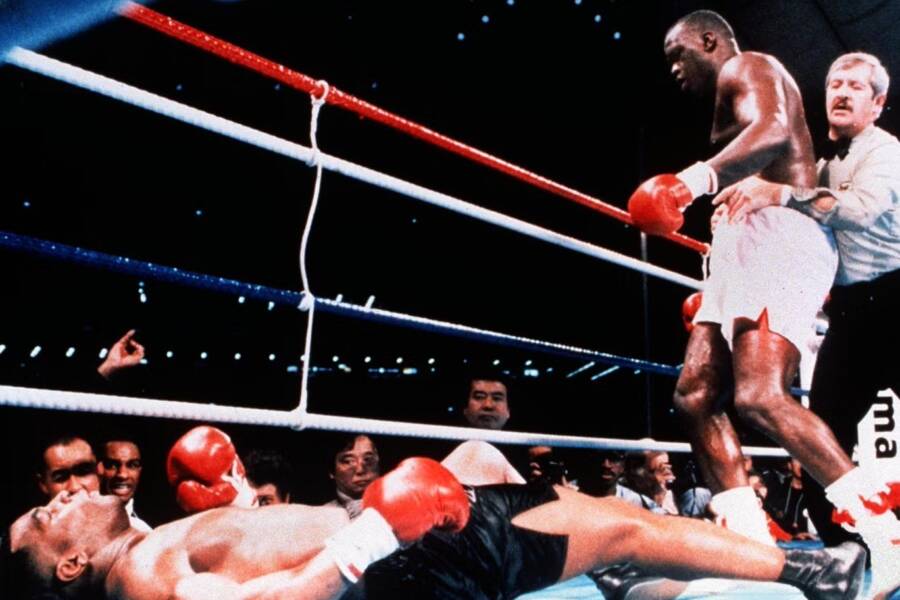
Rex FeaturesThe Tyson vs. Douglas fight was a landmark moment in the history of boxing.
The conviction remained a touchy subject in interviews even a decade out, and Tyson has long maintained that he was falsely convicted. In 2023, another woman also filed a lawsuit against Tyson claiming he had raped her in a limousine in the early 1990s, but as USA Today reported in March 2025, the case was dropped without compensation.
Legal issues aside, Tyson also spent decades grappling with substance abuse issues, including a 2007 conviction for possession of narcotics and driving under the influence. During a 2013 press conference, he confessed: “I want to live my sober life. I don’t want to die. I’m on the verge of dying because I’m a vicious alcoholic…. I’m a bad guy sometimes. I did a lot of bad things. I want to be forgiven.”
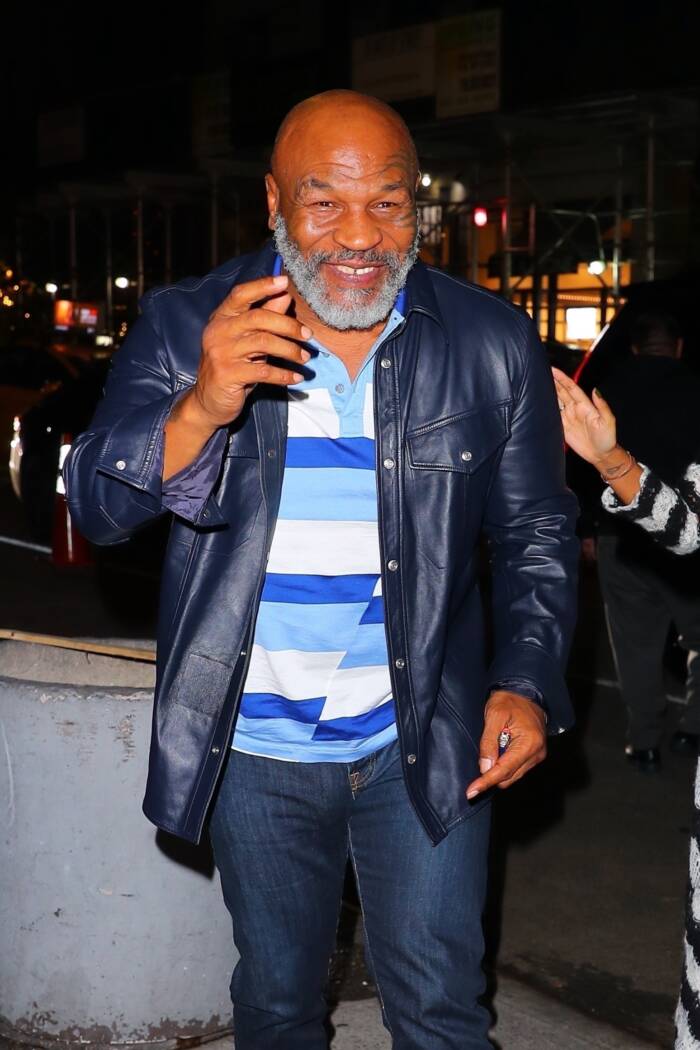
Wikimedia CommonsMike Tyson in 2022.
Tyson is undeniably one of the greatest heavyweight boxers the sport has ever seen, but there is more to his legacy than just that. It’s complicated, marred by controversy. His return to the sport to face off against Jake Paul in 2024 also showed that even legendary fighters like Mike Tyson can’t avoid getting older. Still, if Mike Tyson’s goal as a kid was to be remembered, it’s one he certainly achieved. He once said:
“As a young kid, I used to watch boxing films and I would stop the film when I’d see something I liked — the way he bowed, the way he’d hit somebody, or the way he stood with his belt — and I would rewind it and emulate it. Over and over again. I liked the villains best because you never forgot them.”
After reading about how Mike Tyson’s childhood shaped him into the man he became, read the story of Chuck Wepner, the boxer who inspired the character of Rocky Balboa. Then, check out our gallery of inspiring photos of Muhammad Ali.





